- What is Alstromeria?
- Uses of Alstromeria
- Cultivation Requirements
- Why Grow Alstromeria in the Open Ground?
- Selection of Alstromeria Varieties
- Popular Alstromeria Varieties
- Choosing the Right Varieties for Your Climate
- Hardiness Zone
- Temperature Range
- Climate Conditions
- Growing Season Length
- Preparing the Soil for Alstromeria
- 1. Choose a Sunny Location
- 2. Test the Soil
- 3. Improve Drainage
- 4. Remove Weeds and Debris
- 5. Incorporate Organic Fertilizer
- 6. Amend the Soil (if necessary)
- 7. Rake and Level the Soil
- Soil pH and Drainage Requirements
- Soil pH
- Drainage
- Amending the Soil for Optimum Growth
- Planting Alstromeria
- Choose the Right Location
- Prepare the Soil
- Planting Depth and Spacing
- Watering and Mulching
- Caring for Alstromeria
- When to Plant Alstromeria
- Questions and Answers:
- What is Alstromeria?
- Can Alstromeria be grown in the open ground?
- What are the tips for successful cultivation of Alstromeria in the open ground?
- How long does it take for Alstromeria to bloom?
- What are the different colors of Alstromeria blooms?
- How do you propagate Alstromeria?
- Are there any pests or diseases that affect Alstromeria?
- Videos: 3 Tips for Dividing Alstroemeria, Peruvian Lilies || Quick & Easy Guide
Growing alstromeria in the open ground can be a rewarding experience for any gardener. This beautiful flower, also known as the Peruvian Lily, is known for its vibrant colors and long-lasting blooms. With a little careful cultivation, you can enjoy these stunning flowers in your own garden.
One of the first things to consider when growing alstromeria is the location. These flowers thrive in a sunny spot, so choose a location that receives at least six hours of direct sunlight each day. Alstromeria also prefer well-draining soil, so if your soil tends to be heavy or clay-like, consider amending it with organic matter to improve drainage.
When planting alstromeria, it’s important to give them enough space to spread out. These flowers can grow up to three feet tall and spread about two feet wide, so make sure to plant them at least one foot apart. Dig a hole that is about twice as wide and deep as the root ball, and gently place the plant in the hole, making sure that the crown is level with the soil surface.
Tip: Alstromeria can also be grown in containers, but make sure to choose a container that is at least 18 inches deep to accommodate their long roots.
After planting, it’s important to water the alstromeria regularly. These flowers prefer moist, but not soggy, soil. Water deeply once a week, and keep an eye out for signs of excessive moisture, such as yellowing leaves or wilting. Alstromeria also appreciate a feeding of balanced fertilizer in the spring to promote healthy growth and abundant blooms.
With proper care and attention, growing alstromeria in the open ground can be a rewarding experience. These beautiful flowers are sure to add a pop of color and elegance to any garden, and their long-lasting blooms make them a popular choice for flower arrangements. So why not give alstromeria a try in your garden?
What is Alstromeria?
Alstromeria, also known as Peruvian lily or Lily of the Incas, is a beautiful flowering plant native to South America. It belongs to the family Alstroemeriaceae and is named after the Swedish botanist Baron Clas Alströmer.
Alstroemeria plants are perennials that can grow up to 3-4 feet in height. They have long, slender stems with glossy green foliage and trumpet-shaped flowers that come in a wide range of colors, including white, yellow, pink, orange, and red. The flowers often have unique markings and spots, adding to their beauty.
One of the most distinctive features of Alstroemeria is its ability to produce multiple blooms on a single stem. This makes it a popular choice for cut flower arrangements and bouquets.
Alstroemeria is known for its long-lasting flowers, which can stay fresh for up to two weeks in a vase. This makes it a favorite among florists and flower enthusiasts.
Uses of Alstromeria
Alstroemeria is not only prized for its beauty but also has various uses:
- Ornamental Plant: Alstroemeria is commonly grown in gardens and landscapes as an ornamental plant. Its vibrant colors and long-lasting blooms make it a popular choice for adding color and charm to flower beds and borders.
- Cut Flowers: Alstroemeria is widely cultivated as a cut flower crop. Its long-lasting blooms make it a popular choice for floral arrangements and bouquets. The flowers are often used for special occasions and celebrations.
- Medicinal Purposes: Some species of Alstroemeria have medicinal properties and are used in traditional medicine for various purposes. They are believed to have anti-inflammatory and analgesic properties and are used to treat ailments such as arthritis and gastrointestinal disorders.
Cultivation Requirements
Alstroemeria is relatively easy to grow, but it requires certain conditions for successful cultivation:
- Sunlight: Alstroemeria thrives in full sun to partial shade. It requires at least 6 hours of direct sunlight each day to produce abundant blooms.
- Soil: The plant prefers well-drained soil with organic matter. It should be fertile and slightly acidic, with a pH of 6.0-6.5.
- Watering: Alstroemeria requires regular watering, especially during dry periods. The soil should be kept evenly moist, but not waterlogged, as this can lead to root rot.
- Fertilizer: Applying a balanced fertilizer during the growing season can help promote healthy growth and abundant blooms. It is best to follow the manufacturer’s instructions for the appropriate dosage and timing.
- Winter Protection: In colder climates, Alstroemeria plants may need protection during the winter months. Mulching around the base of the plants can help insulate the roots and prevent frost damage.
By providing the right growing conditions and care, you can enjoy the beauty of Alstroemeria in your garden or use it to create stunning floral arrangements. Whether you are a seasoned gardener or a flower enthusiast, Alstroemeria is a delightful addition to any landscape.
Why Grow Alstromeria in the Open Ground?
Alstromeria, also known as Peruvian lily or lily of the Incas, is a beautiful flowering plant that can be grown successfully in the open ground. There are several reasons why you may want to consider growing alstromeria in your garden:
- Long flowering period: Alstromeria plants produce blooms that last for several weeks or even months. This means you can enjoy a prolonged display of colorful flowers in your garden.
- Wide range of colors: Alstromeria flowers come in a wide range of colors, including pink, red, orange, yellow, and white. This allows you to create a vibrant and diverse flower bed.
- Attractive to pollinators: Alstromeria flowers are known to attract bees, butterflies, and hummingbirds. By planting alstromeria in your garden, you can create a welcoming habitat for these beneficial pollinators.
- Low maintenance: Alstromeria plants are relatively low maintenance. Once established, they are drought-tolerant and require little watering. They are also resistant to many pests and diseases.
- Cutting garden potential: Alstromeria flowers make excellent cut flowers due to their long vase life. By growing alstromeria in your garden, you can create your own supply of fresh and beautiful flowers for floral arrangements.
- Perennial nature: Alstromeria plants are perennial, which means they will come back year after year with minimal effort. This makes them a cost-effective option for long-term garden enjoyment.
If you are looking to add a splash of color and beauty to your garden, consider growing alstromeria in the open ground. With its long flowering period, wide range of colors, and low maintenance requirements, alstromeria is a fantastic choice for any garden enthusiast.
Selection of Alstromeria Varieties
When choosing alstromeria varieties for cultivation in open ground, it is important to consider several factors:
- Climate suitability: Alstromeria varieties have different climate preferences, so it is recommended to choose varieties that are suitable for your particular region. Some varieties are more cold-hardy, while others prefer warmer climates.
- Growth habit: Alstromeria varieties can have different growth habits, including compact varieties suitable for containers, as well as tall varieties that are ideal for cutting gardens. Consider the space available in your garden and choose a variety that fits well.
- Color range: Alstromeria flowers come in a wide range of colors, including various shades of pink, orange, yellow, and white. Consider the overall color scheme of your garden and choose a variety that complements it.
- Flowering time: Different alstromeria varieties have different flowering times. Some varieties may bloom earlier in the season, while others may flower later. Consider when you want to have blooms in your garden and choose a variety that fits your desired timeline.
- Disease resistance: Some alstromeria varieties are more resistant to diseases, such as powdery mildew or crown rot, than others. If these diseases are common in your area, it is advisable to choose disease-resistant varieties.
- Availability: Check the availability of alstromeria varieties in your local nurseries or online seed catalogs. Some varieties may be more readily available than others.
By considering these factors, you can select the most suitable alstromeria varieties for successful cultivation in your open ground.
Popular Alstromeria Varieties
Alstroemeria, also known as Peruvian Lily or Lily of the Incas, is a beautiful flowering plant. There are many different varieties of Alstroemeria, each with its own unique characteristics. Here are some popular Alstroemeria varieties:
- Princess Lilies: These Alstroemeria varieties are known for their vibrant colors and long-lasting flowers. They come in a wide range of colors, including pink, white, yellow, orange, red, and purple.
- Inca Lilies: Inca Lilies are popular for their large, showy flowers. They have a wide color range, with shades of pink, orange, red, and purple.
- Sweet Lilies: Sweet Lilies are characterized by their delicate, pastel-colored flowers. They are often used in floral arrangements and bouquets.
- Friendship Lilies: Friendship Lilies are known for their unique trumpet-shaped flowers. They are often used as cut flowers due to their long vase life.
- Inticancha Lilies: Inticancha Lilies are dwarf varieties of Alstroemeria. They have shorter stems and smaller flowers, but they still come in a variety of colors, including pink, orange, and yellow.
These are just a few examples of popular Alstroemeria varieties. When choosing which ones to grow in your garden, consider your climate, soil conditions, and personal preferences. Whether you prefer bold, vibrant colors or softer, pastel hues, there is an Alstroemeria variety that will suit your needs.
Choosing the Right Varieties for Your Climate
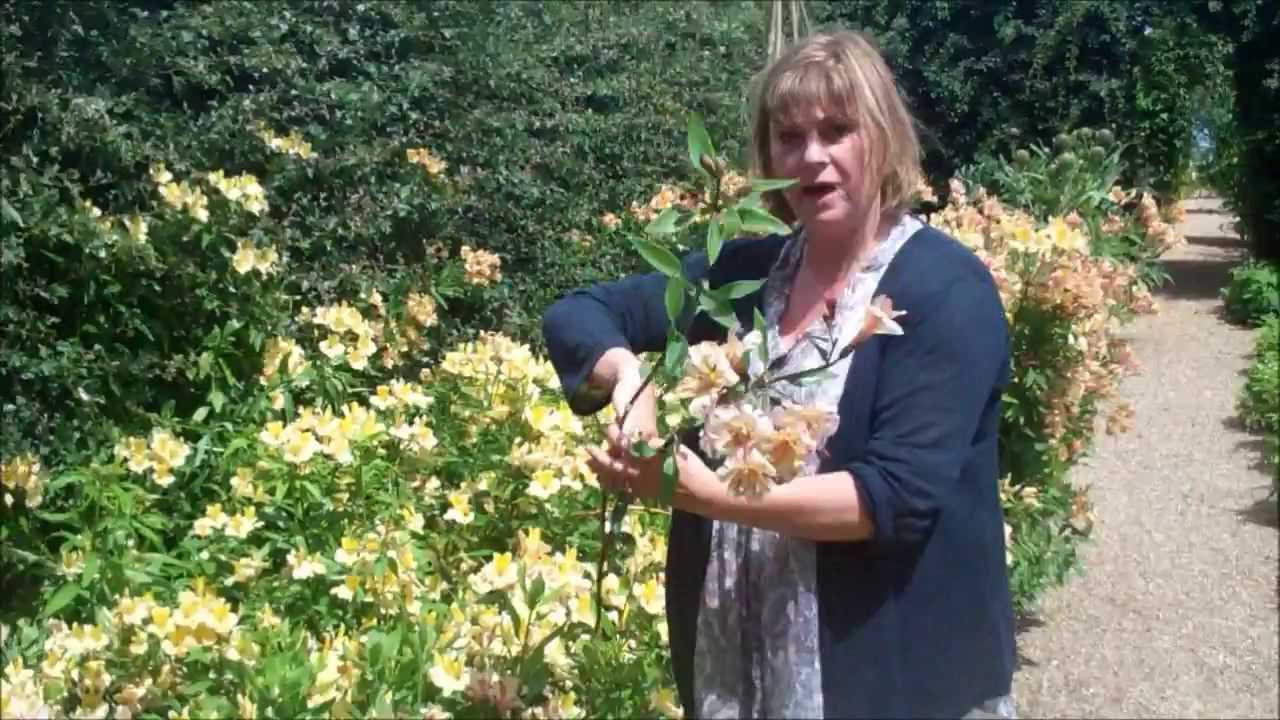
When it comes to growing alstromeria in the open ground, choosing the right varieties for your climate is crucial. Different varieties of alstromeria have different temperature and climate preferences, so it’s important to select ones that are well-suited to your specific region.
Here are some factors to consider when choosing alstromeria varieties for your climate:
Hardiness Zone
One of the first things to consider is the hardiness zone of your region. Alstromeria varieties have different levels of cold tolerance, so it’s important to choose ones that can withstand the winter temperatures in your area. Consult the USDA Hardiness Zone Map to determine your zone and select alstromeria varieties that are recommended for that zone.
Temperature Range
Alstromeria varieties have different temperature preferences, so it’s important to choose ones that can thrive in the temperature range of your region. Some varieties prefer cooler temperatures, while others thrive in hotter climates. Take into account the average temperature range in your region and select alstromeria varieties that are known to perform well in those conditions.
Climate Conditions
Consider the climate conditions in your region, such as rainfall and humidity levels. Alstromeria varieties have different moisture requirements, so it’s important to choose ones that can tolerate the climate conditions in your area. If you live in a region with high rainfall, choose varieties that can withstand wet conditions. If you live in a drier region, choose varieties that are more drought-tolerant.
Growing Season Length
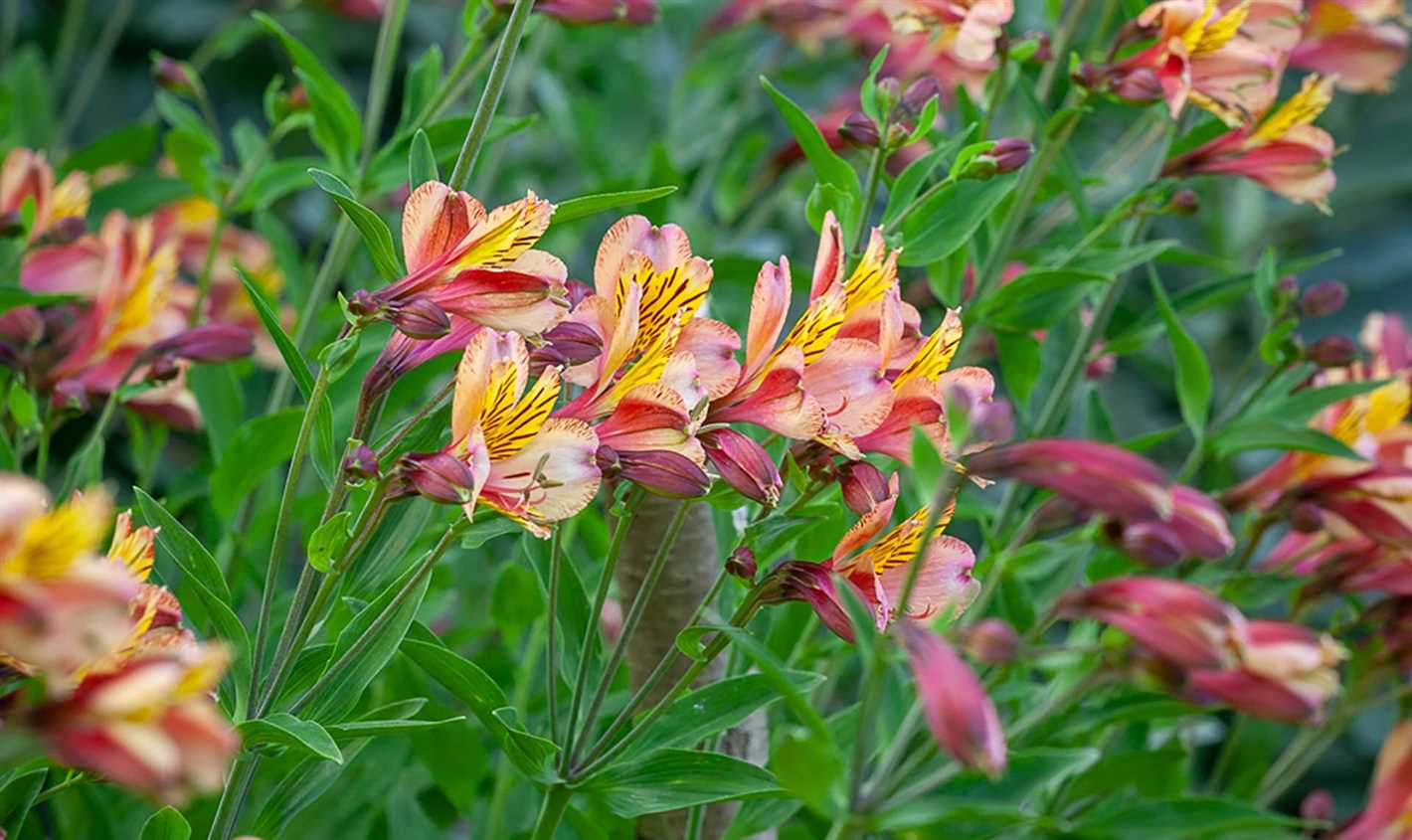
Alstromeria varieties have different growing season lengths, so it’s important to choose ones that can complete their life cycle within the growing season of your region. If you have a short growing season, choose varieties with a shorter time to maturity. If you have a longer growing season, you have more options for selecting alstromeria varieties.
Taking these factors into consideration will help you choose the right alstromeria varieties for your climate and increase your chances of successful cultivation. Remember to also consider other factors such as soil type and sun exposure to ensure optimal growing conditions for your alstromeria plants.
Preparing the Soil for Alstromeria
The success of growing alstromeria in the open ground largely depends on the proper preparation of the soil. Before planting, it is essential to create the optimal conditions for the plant’s growth and development. Follow these steps to prepare the soil for alstromeria:
1. Choose a Sunny Location
Alstromeria thrives in full sun, so choose a location in your garden that receives at least six hours of direct sunlight per day. This will ensure that the plants receive sufficient light to produce abundant blooms.
2. Test the Soil
It is recommended to test the soil before planting alstromeria. This will help you determine its pH level and nutrient content. Alstromeria prefers slightly acidic soil with a pH range of 6.0 to 6.5. If the pH is outside of this range, you may need to amend the soil accordingly.
3. Improve Drainage
Alstromeria does not tolerate waterlogging, so it is crucial to ensure good drainage in the planting area. If your soil is heavy and clayey, you can improve its drainage by adding organic matter such as compost or well-rotted manure. This will also help improve the soil’s fertility and structure.
4. Remove Weeds and Debris
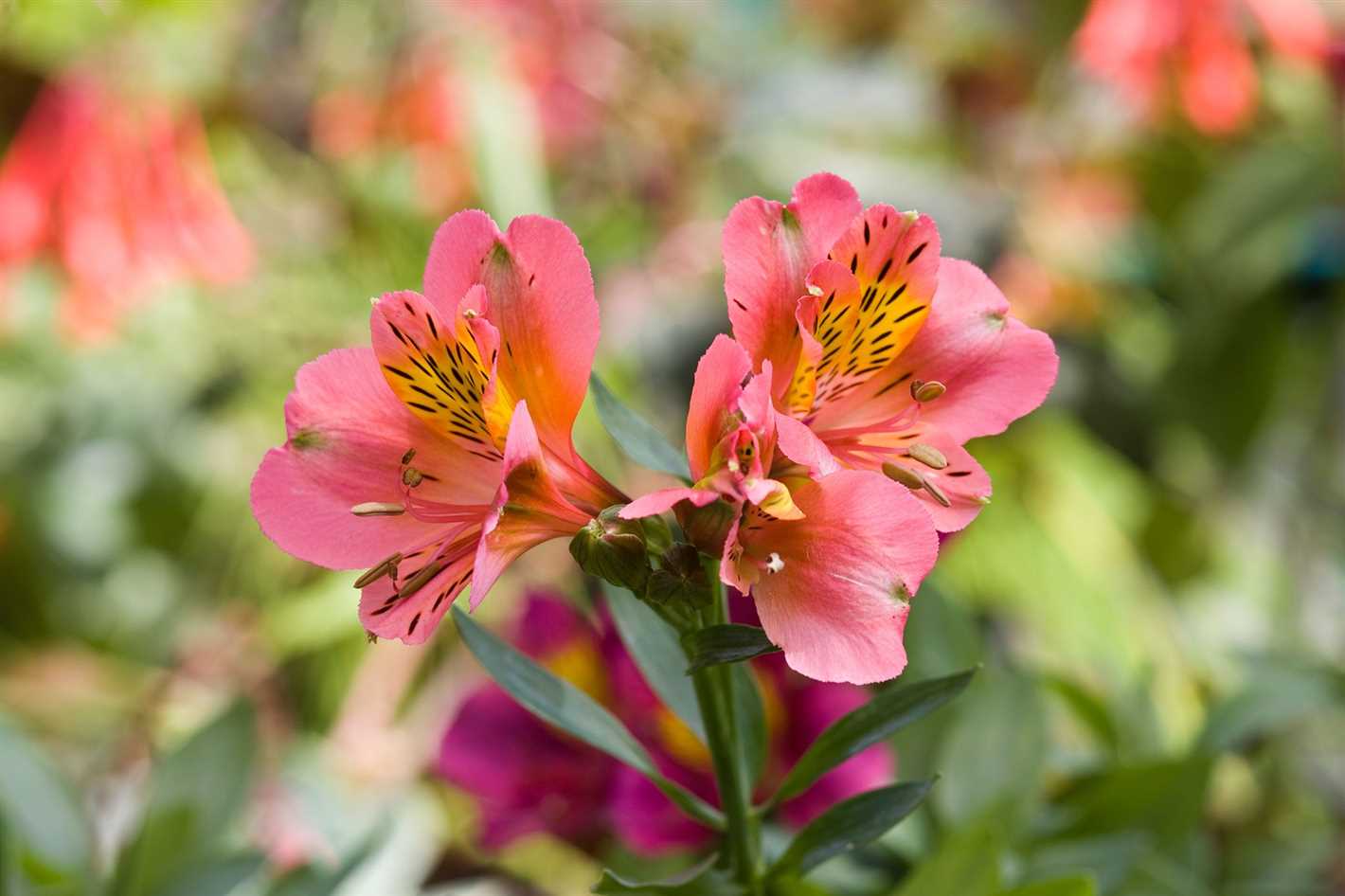
Before planting, remove any weeds, rocks, or debris from the planting area. Weeds can compete with alstromeria for nutrients and water, so it is important to eliminate them to give your plants the best chance of growth.
5. Incorporate Organic Fertilizer
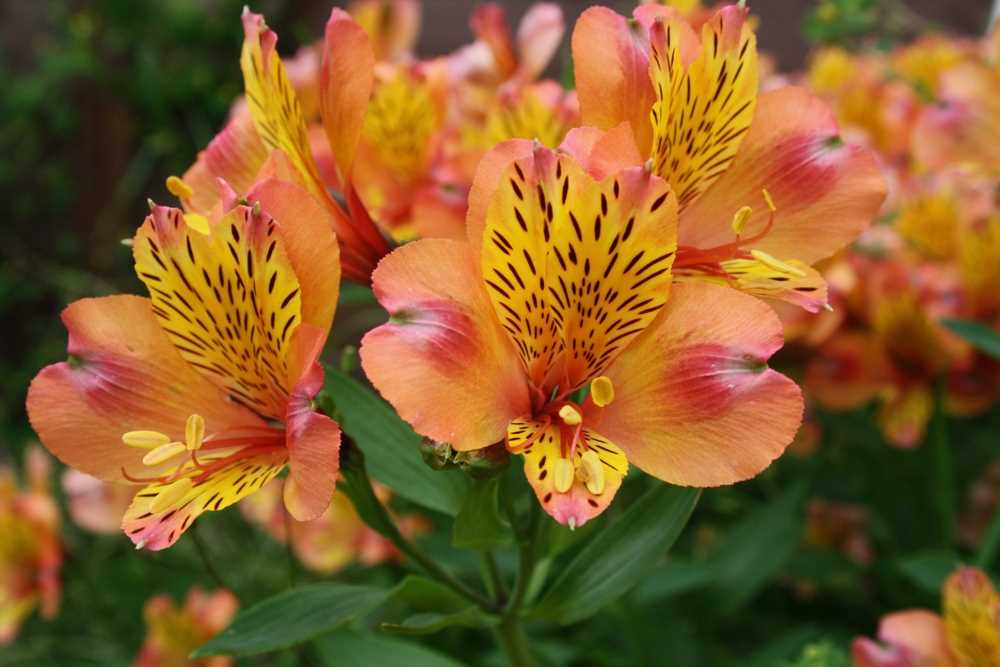
Prior to planting, incorporate organic fertilizer into the soil. This will provide essential nutrients to support the initial growth of the alstromeria plants. Follow the package instructions for the recommended amount and method of application.
6. Amend the Soil (if necessary)
If your soil has a pH outside the preferred range or lacks essential nutrients, you may need to amend it. For example, if the soil is too acidic, you can add lime to raise the pH. Conversely, if the soil is too alkaline, you can add sulfur or peat moss to lower the pH. Consult with a local gardening expert or perform a soil test for specific recommendations.
7. Rake and Level the Soil
Once you have completed the necessary soil preparations, rake and level the soil to create a smooth planting surface. This will help ensure that the alstromeria bulbs or plants are planted at the correct depth and will allow for proper root development.
By following these steps to prepare the soil for alstromeria, you will provide an optimal environment for the plants to thrive. This will result in healthy growth and abundant blooms, enhancing the beauty of your garden.
Soil pH and Drainage Requirements
Alstromeria plants require well-draining soil with a pH level between 6.0 and 7.0. It is crucial to provide them with the right soil conditions to ensure their healthy growth and development.
Soil pH
The pH level of the soil affects the availability of nutrients to the alstromeria plants. Ideally, the soil should be slightly acidic to neutral, with a pH level between 6.0 and 7.0. You can test the soil pH using a soil testing kit available at local garden centers. If the soil is too acidic (below 6.0), you can amend it by adding lime. On the other hand, if the soil is too alkaline (above 7.0), you can lower the pH by adding sulfur or peat moss.
Drainage
Good drainage is essential for alstromeria plants as they do not tolerate waterlogged soil. Poor drainage can lead to root rot and other diseases. To ensure proper drainage, it is recommended to plant alstromeria in raised beds or containers with drainage holes. If you have heavy clay soil, you can improve the drainage by adding organic matter such as compost or well-rotted manure. Additionally, you can incorporate sand or perlite into the soil to improve its drainage capabilities.
- Ensure the soil has a pH level between 6.0 and 7.0.
- Test the soil pH and make necessary adjustments if needed.
- Provide good drainage by planting in raised beds or containers with drainage holes.
- Improve drainage in heavy clay soil by adding organic matter or sand.
By providing the appropriate soil pH and ensuring good drainage, you can create optimal growing conditions for your alstromeria plants, resulting in healthy growth and abundant blooms.
Amending the Soil for Optimum Growth
Alstromeria plants thrive in well-drained soil that is rich in organic matter. Before planting, it is important to prepare the soil to provide the optimum conditions for growth and development of the plants. Here are some tips on how to amend the soil for successful cultivation of Alstromeria:
- Soil Testing: Start by testing the soil to determine its pH level and nutrient content. Alstromeria plants prefer slightly acidic to neutral soil with a pH range of 6.0 to 7.0. A soil test will also help identify any deficiencies and allow you to make appropriate amendments.
- Improving Drainage: Alstromeria plants do not tolerate waterlogged soil, so it is important to improve drainage if necessary. If the soil is heavy clay or tends to hold water, consider amending it with organic matter such as compost or well-aged manure. This will help loosen the soil structure and improve drainage.
- Adding Organic Matter: Alstromeria plants benefit from the addition of organic matter, as it helps retain moisture and provides essential nutrients. Incorporate well-rotted compost, leaf mold, or aged manure into the top 8-10 inches of soil before planting. This will help create a fertile and nutrient-rich environment for the plants.
- Adjusting pH: If the soil pH is outside the ideal range, you can make adjustments by adding lime to raise the pH or sulfur to lower it. Follow the recommendations from your soil test results and make gradual adjustments over time to avoid drastic changes.
- Applying Fertilizer: Alstromeria plants benefit from regular fertilization to support their growth and flowering. Before planting, incorporate a balanced slow-release fertilizer into the soil according to the package instructions. Once the plants are established, you can continue to feed them with a balanced fertilizer every 4-6 weeks during the growing season.
By taking the time to amend the soil before planting, you can create the optimal growing conditions for Alstromeria plants. This will ensure they thrive and produce beautiful flowers year after year.
Planting Alstromeria
When it comes to planting alstromeria, there are a few important factors to consider to ensure successful cultivation. Follow these tips to plant alstromeria in the open ground:
Choose the Right Location
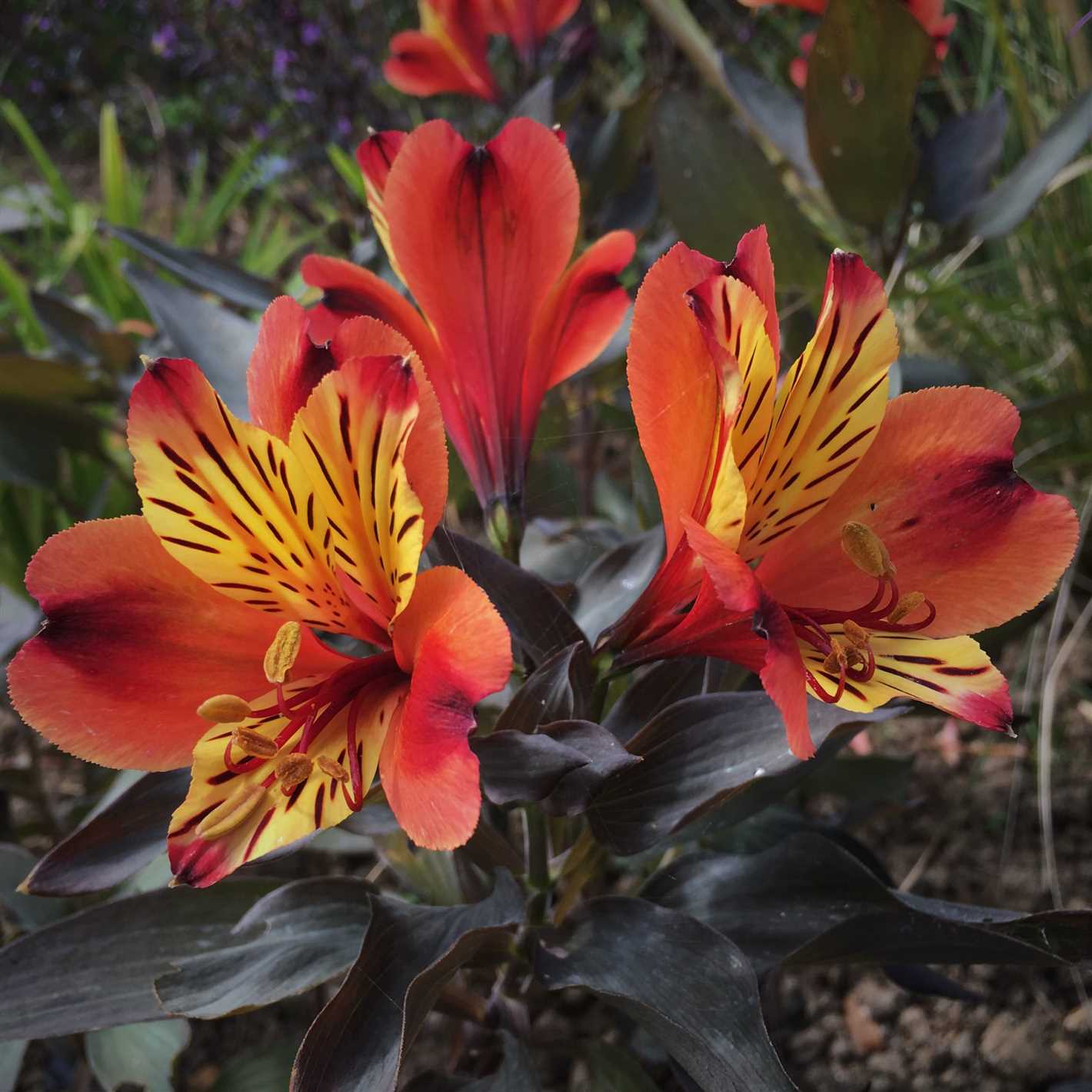
Alstromeria plants thrive in full sun or partial shade, so choose a location in your garden that receives at least 6 hours of direct sunlight each day. Additionally, make sure the soil is well-draining to prevent the roots from becoming waterlogged.
Prepare the Soil
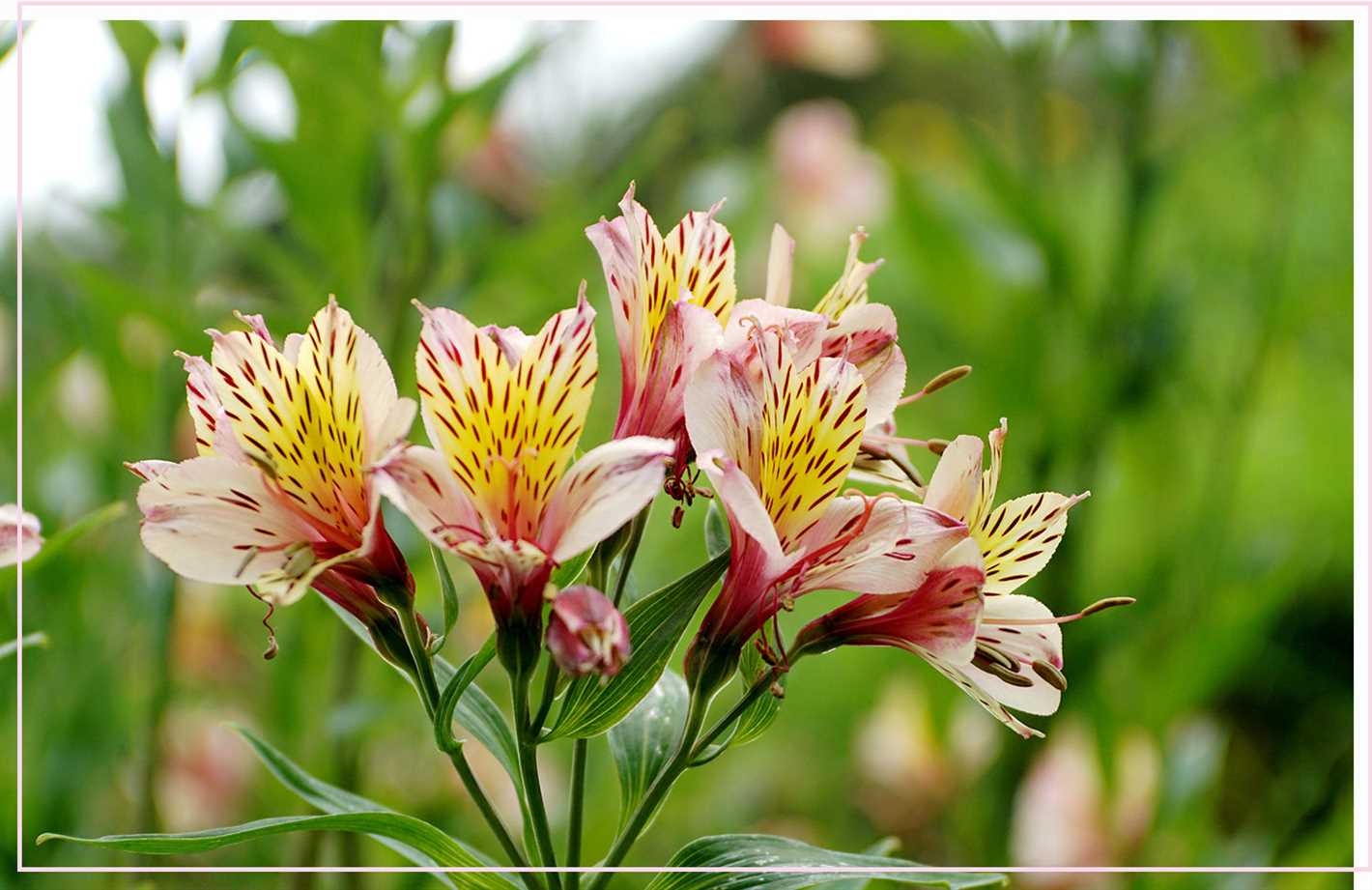
Before planting alstromeria, it’s important to prepare the soil to provide the best growing conditions for the plants. Loosen the soil to a depth of 12-15 inches and remove any weeds or debris. Mix in organic matter, such as compost or well-rotted manure, to improve the soil’s fertility and drainage.
Planting Depth and Spacing
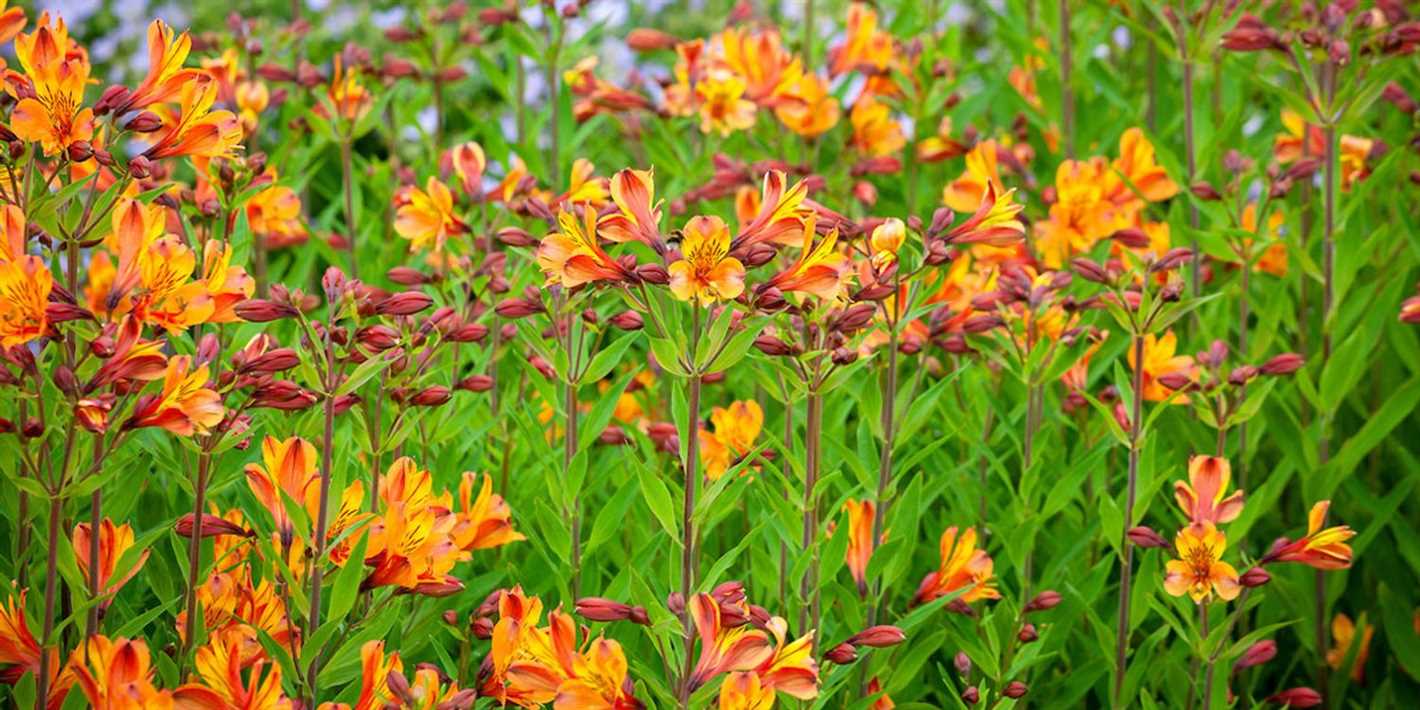
When planting alstromeria, dig a hole that is deep enough to accommodate the plant’s rootball. The depth of the hole should be slightly deeper than the height of the rootball. Space the plants about 12-18 inches apart to allow for proper air circulation and growth.
Watering and Mulching
After planting, water the alstromeria thoroughly to settle the soil and remove any air pockets around the roots. Keep the soil consistently moist, but not waterlogged. Applying a layer of organic mulch around the base of the plants can help conserve moisture, suppress weeds, and regulate soil temperature.
Caring for Alstromeria
To ensure the optimal growth of your alstromeria plants, consider the following care tips:
- Water the plants regularly, especially during dry periods.
- Fertilize the plants with a balanced fertilizer once a month during the growing season.
- Support the plants with stakes or trellises to prevent them from falling over under their own weight.
- Remove faded flowers to encourage continuous blooming.
- Divide the plants every 2-3 years to prevent overcrowding and promote healthier growth.
By following these planting and care tips, you can successfully cultivate alstromeria in the open ground and enjoy their beautiful blooms for years to come.
When to Plant Alstromeria
Growing alstroemeria in the open ground requires proper planning and timing. Planting alstroemeria at the right time is crucial to ensure its successful growth and development. Here are some important considerations regarding when to plant alstroemeria:
- Weather and Climate: Alstroemeria is a warm weather plant and it thrives in mild climates. It is not frost tolerant, so it’s essential to plant it after the danger of frost has passed. In general, it is recommended to plant alstroemeria in late spring or early summer when the weather is warm and stable.
- Soil Temperature: Alstroemeria prefers warm soil for optimal growth. The soil temperature should be at least 60°F (15.5°C) before planting alstroemeria. Planting alstroemeria in cold soil can result in poor growth and weak plants.
- Preparing the Soil: Before planting alstroemeria, it’s important to prepare the soil properly. The soil should be well-drained, rich in organic matter, and slightly acidic to neutral (pH 6.0-7.0). Adding compost or well-rotted manure to the soil can improve its fertility and drainage.
- Sunlight Requirements: Alstroemeria requires full sun to thrive. Choose a planting location that receives at least 6 hours of direct sunlight per day. Insufficient sunlight can result in weak plants and reduced flower production.
- Avoiding Extreme Temperatures: Extreme temperatures, either hot or cold, can stress alstroemeria plants. Planting alstroemeria when the weather is not too hot or too cold can help ensure successful establishment and growth.
By considering these factors and planting alstroemeria at the right time, you can create favorable conditions for its growth and enjoy beautiful blooms in your garden.
Questions and Answers:
What is Alstromeria?
Alstromeria is a flowering plant that is commonly known as Peruvian Lily or Lily of the Incas. It is native to South America and is famous for its vibrant and long-lasting blooms.
Can Alstromeria be grown in the open ground?
Yes, Alstromeria can be successfully grown in the open ground. However, it is important to choose a suitable location with well-draining soil and provide the plants with proper care and maintenance.
What are the tips for successful cultivation of Alstromeria in the open ground?
To successfully cultivate Alstromeria in the open ground, it is important to choose a sunny location with well-draining soil. The soil should be enriched with organic matter and the plants should be watered regularly. It is also recommended to mulch around the plants to retain moisture and control weeds.
How long does it take for Alstromeria to bloom?
The time it takes for Alstromeria to bloom can vary depending on different factors such as the variety of the plant and the growing conditions. Generally, it takes about 2 to 3 years for Alstromeria plants to reach maturity and start producing blooms.
What are the different colors of Alstromeria blooms?
Alstromeria blooms are available in a wide range of colors including white, pink, red, orange, yellow, and purple. Some varieties even have bi-colored or speckled blooms.
How do you propagate Alstromeria?
Alstromeria can be propagated through division or by growing from seeds. To propagate through division, the clumps of tubers should be carefully separated and planted in a new location. To grow from seeds, the seeds should be sown in containers or directly in the ground.
Are there any pests or diseases that affect Alstromeria?
Yes, Alstromeria can be susceptible to pests such as aphids, spider mites, and slugs. They can also be affected by diseases such as fungal leaf spot and root rot. Proper care and regular inspection can help prevent and control these issues.







